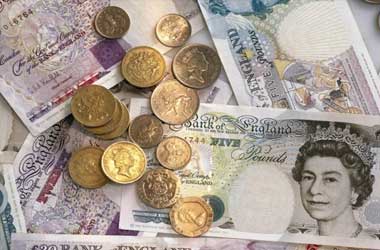 At the end of October, the British pound traded at $1.373 per dollar as investors absorbed the UK’s annual budget and expenditure review amid worries about inflationary pressure and the prolonged energy crisis, according to Bloomberg. Britain’s economy is on track to expand faster than projected in 2021, according to Finance Minister Rishi Sunak, while predictions for the unemployment rate and the budget deficit have also been revised down in recent months.
At the end of October, the British pound traded at $1.373 per dollar as investors absorbed the UK’s annual budget and expenditure review amid worries about inflationary pressure and the prolonged energy crisis, according to Bloomberg. Britain’s economy is on track to expand faster than projected in 2021, according to Finance Minister Rishi Sunak, while predictions for the unemployment rate and the budget deficit have also been revised down in recent months.
The Office for Budgetary Responsibility estimated that GDP would increase by 6.5 percent this year, which is faster than the 4.0 percent growth expected in March, then by 6.0 percent, 2.1 percent, and 1.3 percent in 2022, 2023, and 2024. Sunak also said that he had written to the Governor of the Bank of England to underline the bank’s mandate to pursue low and stable inflation, citing the Office for Budget Responsibility’s forecast of CPI inflation of 4% over the following year.
Sterling has reached a one-month high of over $1.38 earlier this month, on anticipation that the Bank of England would raise interest rates this year, according to Bloomberg. Particularly concerning is the fact that the United Kingdom’s car production fell 41.5 percent year on year to 67,149 units in September 2021, marking the third consecutive month of decline and the worst September performance since 1982. This was hampered by production stoppages caused by the ongoing global shortage of semiconductors, as well as the closure of one of the country’s largest plants.
Despite the persistent obstacles, production of the newest battery-electric (BEV), plug-in hybrid (PHEV), and hybrid (HEV) vehicles continues to set new milestones, accounting for over a third (32.3 percent) of all vehicles produced, or 21,679 units. It means that since January, auto manufactures in the United Kingdom have produced 158,710 alternative-fuel vehicles.
Exports account for the majority of the increase in production year-to-date, which has increased by 3.8 percent to 656,776 vehicles, with 82.7 percent of output going to foreign markets. In contrast, the year-to-date total was down 33.5 percent from the previous year’s performance and was down 44.1 percent – equal to 517,438 less units – from the five-year average prior to the pandemic.
Furthermore, the yield on the 10-year government bond in the United Kingdom fell further to 1 percent, moving further away from a recent two-year high of 1.22 percent reached on October 21st, as investors digested Britain’s annual budget amid expectations of inflationary pressure, higher interest rates, and the unraveling of the energy crisis, among other factors.
Rishi Sunak, the UK’s finance minister, said the country’s economy was on track to expand more swiftly than predicted in 2021, while predictions for the jobless rate and the budget deficit were also lowered down. As an additional measure, Sunak said that he has written to Governor Mark Carney of the Bank of England to reiterate the institution’s commitment to achieving low and stable inflation rates.
On the monetary policy front, the country’s central bank is expected to raise interest rates this year, while the Federal Reserve of the United States is expected to begin reducing its massive bond-buying program, while the European Central Bank is expected to keep policy unchanged for the foreseeable future.




